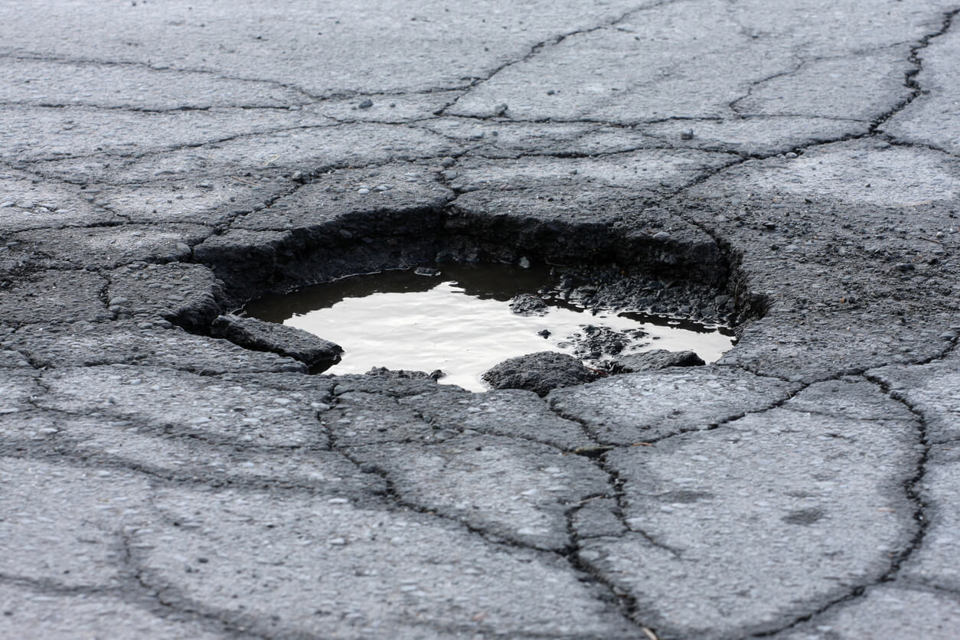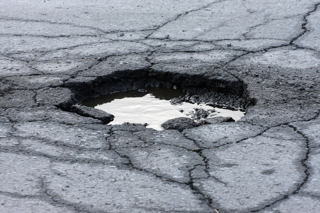RAC patrols dealt with 1,714 breakdowns in the last three months of 2018 that were more than likely caused by potholes or poor road surfaces.
This number of call-outs for damaged shock absorbers, broken suspension springs and distorted wheels represented 0.8% of the 217,966 breakdowns the RAC attended – the joint lowest percentage share of pothole-related faults in the fourth quarter of any year since 2013.
RAC Breakdown spokesperson Simon Williams said: “Data gathered from the breakdowns RAC patrols attended in the final three months of 2018 shows a slightly more encouraging picture in relation to the quality of UK road surfaces.
“Unfortunately, while this is better news we are far from having the beautifully smooth roads that motorists would like.”
When looking at 2018 as a whole, RAC patrols attended 13,093 breakdowns related to poor road surface conditions, which equated to 1.4% of all RAC call-outs – the lowest percentage recorded for any 12-month period since October 2017 (Q3 2017 – also 1.4%), but unfortunately still very close to the all-time high of 1.6% seen in Q3 and Q4 2017 and Q3 and Q4 2015.
However, in contrast to this improving picture, the Pothole Index, which is the RAC’s most accurate long-term indicator of the health of the UK’s roads, remains stubbornly high at 2.5. This means drivers are still two and a half times more likely to suffer a pothole-related breakdown than they were when the RAC first started analysing its data in this way 13 years ago in 2006.
In the third quarter of 2018 the index was at 2.63, so the latest figure is also an improvement on that as well as representing a third successive quarterly fall. The record high for the RAC Pothole Index figure was 3.5 in Q1 2010 when motorists were 3.5 times more likely to breakdown due hitting a pothole as they were in 2006.
The poor state of local roads was identified to be the issue of greatest concern in the RAC’s 2018 Report on Motoring with 42% of 1,808 drivers surveyed citing this as one of their top four concerns compared to 10% in 2017.
Two-thirds (66%) also said the condition of local roads had deteriorated in the last 12 months which represents a worrying increase on 2017 when the percentage was 51%.
Williams said: “Those responsible for our roads have much to do to restore drivers’ faith as too many suffer the consequences of potholes on a daily basis. The next two quarters will be particularly telling if temperatures plummet and water gets into road defects and freezes and expands causing further deterioration in surfaces.
“We know local authorities are fighting an uphill road maintenance battle due to the difficult choices they have had to make in terms of where they spend their money. This is why we believe central government needs to give councils increased money for roads by ring-fencing a proportion of the existing £28 billion they receive in fuel duty every year. This would help councils plan ahead more effectively, shifting focus away from just reactive maintenance to preventative action which would help stop potholes occurring in the first place.
“We feel it would be far fairer to road users if more of the tax generated by drivers was put towards the repair and maintenance of local roads.”
From April 2020 the National Roads Fund will come into action with the £6bn brought in from vehicle excise duty (VED) each year being ring-fenced for road maintenance and improvement as part of the Road Investment Strategy.
Williams said: “We believe there is a need for a similar fund for local roads that can tackle the backlog of maintenance over a period of 10 years.
“The one-off cost of bring roads in England and Wales back to a fit-for-purpose state is estimated by the Asphalt Industry Alliance to be £9.3bn.”






















Login to comment
Comments
No comments have been made yet.